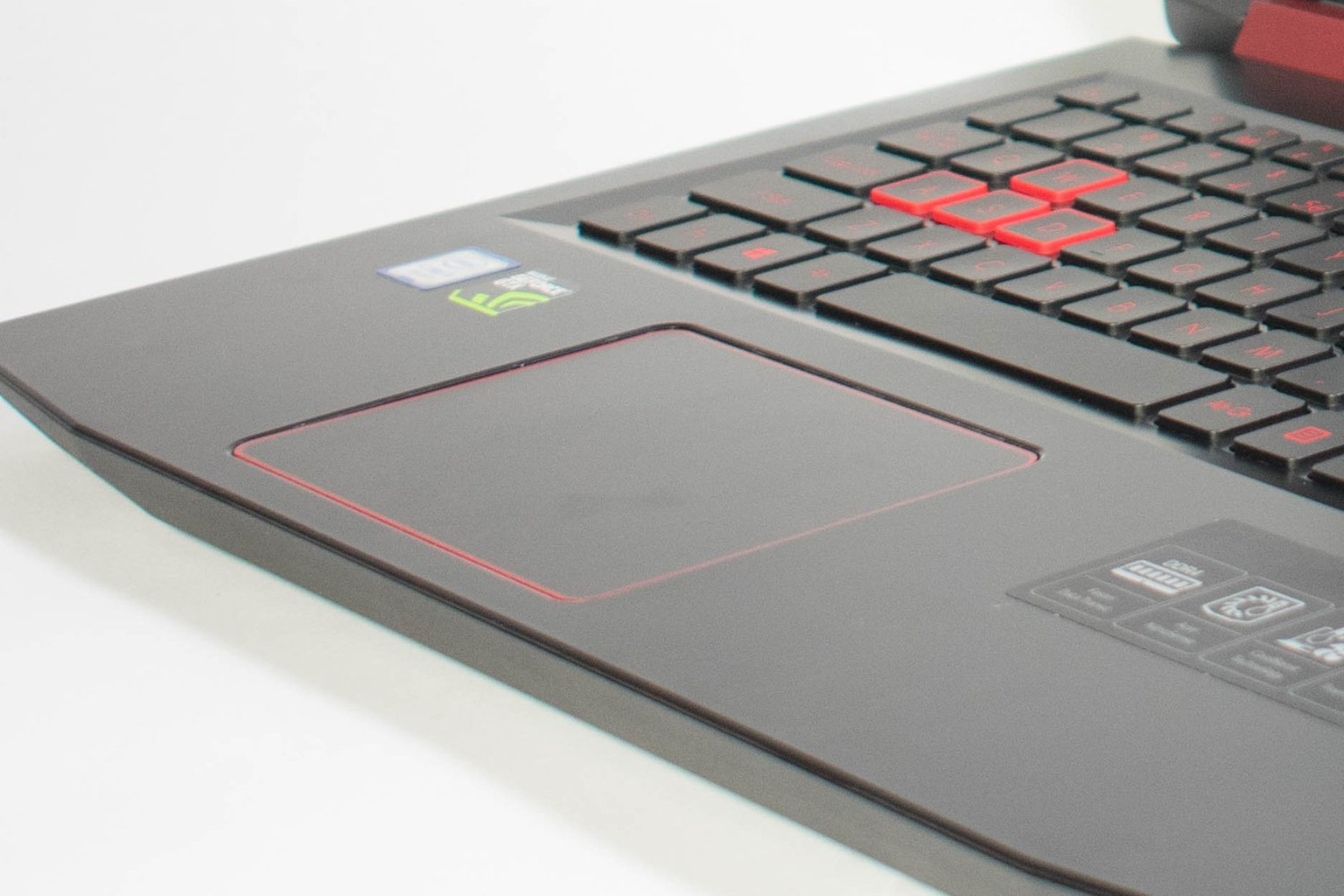Introduction
Are you frustrated by the accidental cursor movements caused by the touchpad on your Acer laptop? You're not alone. Many users encounter this issue and seek ways to disable the touchpad to enhance their computing experience. Fortunately, there are several methods to achieve this, ranging from simple keyboard shortcuts to utilizing advanced software. In this article, we'll explore various techniques to disable the touchpad on your Acer laptop, allowing you to regain control over your cursor movements and work more efficiently.
Whether you're a seasoned computer user or a novice, learning how to disable the touchpad can significantly improve your overall productivity. By implementing the methods outlined in this guide, you can customize your Acer laptop to suit your preferences and optimize your workflow. So, let's delve into the step-by-step procedures to disable the touchpad and alleviate the frustration caused by accidental cursor movements. Whether you prefer using keyboard shortcuts, navigating through the Device Manager, accessing the Control Panel, or utilizing third-party software, we've got you covered with comprehensive instructions to help you achieve your desired touchpad settings. Let's embark on this journey to enhance your laptop experience and regain control over your cursor movements.
Method 1: Using Keyboard Shortcut
One of the quickest and most convenient ways to disable the touchpad on your Acer laptop is by utilizing a keyboard shortcut. This method allows you to toggle the touchpad on and off with ease, providing instant control over your cursor movements. Follow these simple steps to employ the keyboard shortcut:
- Locate the Function Key: Most Acer laptops feature a designated function key that enables you to toggle the touchpad on and off. Look for the touchpad icon on one of the function keys, typically labeled as “F7” or “F9.” This key is specifically designed to control the touchpad functionality.
- Press the Function Key: To disable the touchpad, press and hold the “Fn” key on your keyboard, then simultaneously press the designated function key for the touchpad. This action will deactivate the touchpad, preventing any unintended cursor movements.
- Enable the Touchpad: Should you need to re-enable the touchpad, simply repeat the same key combination by pressing the “Fn” key and the designated function key once again. This will restore the touchpad functionality, allowing you to resume normal cursor navigation.
By mastering this straightforward keyboard shortcut, you can swiftly disable and re-enable the touchpad on your Acer laptop as needed. This method offers a convenient solution for temporarily deactivating the touchpad without the need for additional software or complex configurations. Whether you’re working on a task that requires precise cursor control or simply prefer using an external mouse, the keyboard shortcut provides a seamless way to manage your touchpad settings with minimal effort.
Method 2: Using Device Manager
Another effective approach to disable the touchpad on your Acer laptop involves utilizing the Device Manager, a built-in Windows tool that allows you to manage and configure hardware devices. By accessing the Device Manager, you can gain more granular control over the touchpad settings and disable it through a few simple steps. Follow the instructions below to disable the touchpad using the Device Manager:
- Access the Device Manager: To open the Device Manager, right-click on the “Start” button and select “Device Manager” from the context menu. Alternatively, you can press the Windows key + X on your keyboard and choose “Device Manager” from the power user menu.
- Locate the Touchpad: In the Device Manager window, expand the “Mice and other pointing devices” category to reveal the touchpad entry. It is typically listed as “Synaptics Pointing Device” or a similar name corresponding to the touchpad manufacturer.
- Disable the Touchpad: Right-click on the touchpad device and select “Disable device” from the context menu. A confirmation dialog may appear to verify the action. Click “Yes” to proceed with disabling the touchpad.
- Enable the Touchpad: Should you need to re-enable the touchpad in the future, return to the Device Manager, locate the disabled touchpad device, right-click on it, and select “Enable device.” This action will restore the touchpad’s functionality.
By leveraging the Device Manager, you can effectively disable the touchpad on your Acer laptop with precision and flexibility. This method offers a more in-depth control over hardware devices, allowing you to manage the touchpad and tailor its functionality to your specific preferences. Whether you prefer using an external mouse for precise navigation or need to temporarily deactivate the touchpad for a particular task, the Device Manager provides a straightforward solution to customize your touchpad settings.
Method 3: Using Control Panel
Utilizing the Control Panel is another viable method to disable the touchpad on your Acer laptop. The Control Panel provides a centralized platform for managing various system settings, including those related to hardware devices such as the touchpad. By accessing the Control Panel, you can easily navigate to the touchpad settings and disable it using the following steps:
- Open the Control Panel: To access the Control Panel, click on the “Start” button, type “Control Panel” in the search bar, and select the Control Panel from the search results. Alternatively, you can right-click on the Start button and choose “Control Panel” from the context menu.
- Locate the Mouse Settings: Within the Control Panel, navigate to the “Hardware and Sound” category and click on “Mouse” to access the mouse properties and settings.
- Disable the Touchpad: In the Mouse Properties window, go to the “Device Settings” or “Touchpad” tab, depending on your system configuration. Locate the option to disable the touchpad and select it. Click “Apply” and then “OK” to confirm the changes.
- Re-enable the Touchpad: If you need to re-enable the touchpad in the future, revisit the Mouse Properties window, locate the touchpad settings, and enable the touchpad functionality by following the same process in reverse.
By leveraging the Control Panel, you can easily customize the touchpad settings on your Acer laptop and disable it according to your preferences. This method provides a user-friendly interface for managing the touchpad functionality, allowing you to tailor its behavior to suit your specific workflow and external device usage. Whether you’re focused on precision tasks that require an external mouse or simply prefer to temporarily deactivate the touchpad, the Control Panel offers a straightforward solution to accommodate your needs.
Method 4: Using Third-Party Software
For users seeking advanced customization options and additional features, utilizing third-party software can provide a comprehensive solution to disable the touchpad on an Acer laptop. Various third-party applications are specifically designed to manage touchpad settings and offer enhanced control over its functionality. By installing and configuring third-party software, you can access a wider range of customization options and efficiently disable the touchpad as needed. Here’s how you can use third-party software to achieve this:
- Research and Install Compatible Software: Begin by researching reputable third-party software that is compatible with your Acer laptop and offers touchpad management features. Look for user reviews and recommendations to ensure the software meets your requirements.
- Configure Touchpad Settings: After installing the selected third-party software, navigate to the touchpad settings within the application. Depending on the software’s interface, you can explore various options to customize the touchpad behavior and disable it according to your preferences.
- Utilize Advanced Features: Third-party software often provides advanced features such as gesture customization, sensitivity adjustments, and specialized profiles for different usage scenarios. Take advantage of these features to tailor the touchpad settings to your specific workflow and external device usage.
- Disable the Touchpad: Within the third-party software, locate the option to disable the touchpad and apply the changes. This action will deactivate the touchpad, allowing you to rely on external pointing devices or alternative input methods as needed.
- Restore Touchpad Functionality: In the event that you need to re-enable the touchpad, revisit the third-party software’s settings and reverse the disabling action to restore the touchpad’s functionality.
By leveraging third-party software, you can access a wealth of customization options and advanced features to effectively manage the touchpad on your Acer laptop. This method offers a comprehensive approach for users who require precise control over touchpad settings and seek additional functionality beyond the built-in options. Whether you prioritize gesture customization, sensitivity adjustments, or specialized profiles, third-party software can elevate your touchpad management experience and provide a tailored solution to meet your specific needs.
Conclusion
In conclusion, the ability to disable the touchpad on your Acer laptop empowers you to take control of your computing experience and customize your device to suit your preferences. By exploring the methods outlined in this guide, you can effectively manage the touchpad functionality and mitigate the frustrations caused by accidental cursor movements. Whether you opt for the convenience of keyboard shortcuts, the precision of Device Manager configurations, the user-friendly interface of the Control Panel, or the advanced features offered by third-party software, you have a range of options to tailor your touchpad settings according to your specific needs.
Mastering the art of touchpad management allows you to seamlessly transition between external pointing devices and the touchpad itself, ensuring a smooth and efficient workflow. Whether you’re engaged in precision tasks that demand external mouse usage or simply prefer to deactivate the touchpad for specific activities, the methods presented in this guide provide versatile solutions to accommodate your preferences.
Ultimately, the ability to disable the touchpad on your Acer laptop grants you the freedom to optimize your computing environment and enhance your productivity. By leveraging the diverse methods available, you can confidently navigate through your daily tasks with improved control over your cursor movements, resulting in a more tailored and enjoyable computing experience.

























